
Trees Around Las Vegas, Vegetation Around Las Vegas
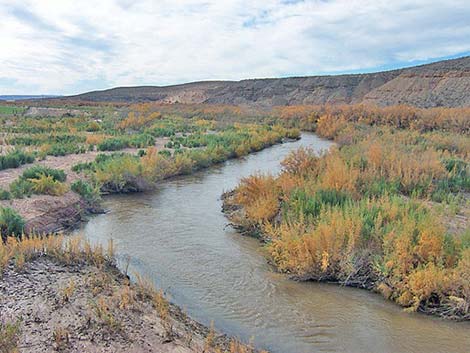 Fall colors on thickets of Salt Cedar along the Virgin River |
General: Saltcedar (Tamarix ramosissima) are short, spindly, many branching large shrubs or small trees with red stems, spindly gray-green stems, tiny scale-like leaves, and huge numbers of tiny pink flowers. Saltcedar was introduced into North America from Eurasia in the 1890s to control erosion. Saltcedar does well here, but unfortunately, it sucks huge amounts of water from the soil and thickets can dry-down small streams and springs. Saltcedar, like its relative Athel Tamarisk, produce little that benefits the habitat or wildlife, other than thick cover. Saltcedar is a noxious weed that has become common along lakes, streams, springs, and other wet areas in the Lower Sonoran (Creosote-Bursage Flats) and Upper Sonoran (Mojave Desert Scrub) life zones. Saltcedar thickets crowd out native species. Around Las Vegas, keep an eye out for this species around wet areas. Land managers are actively working to eradicate Saltcedar, but it is common everywhere. Saltcedar is the #3 "Priority Weed of Concern" in the Lower Las Vegas Wash, and it is on the Lake Mead NRA "Top 10 Invasive Species" list. |
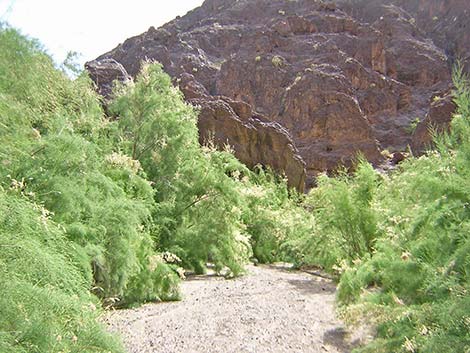 Thicket along desert wash |
This is a State of Nevada listed noxious weed. If hikers and other visitors to the native habitats around Las Vegas see this species, please report the observation to the Nevada Department of Agriculture. If you have this species on your private property, please consider eradicating it. Researchers have recently released a tiny Saltcedar Leaf Beetle that is native to central Asia and eats only saltcedar. Adult beetles are about 8-mm long and are yellow with black stripes and spots. The larvae are striped black and yellow. Adults and larvae eat leaves, and a good infestation of beetles can kill entire stands of saltcedar -- let's wish them well! Family: Tamarisk (Tamaricaceae). Other Names: Tamarisk, salt cedar. Tamarix chinensis. Experts use the word "muddy" when referring to the taxonomy in this group, and recently some lump T. ramosissima with T. chinensis under the name Tamarix chinensis. Hybridization in the New World seems to be rampant between these two "species." |
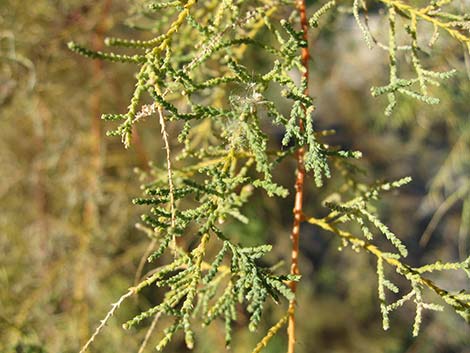 Leaves and red twigs |
Plant Form: Short, spindly, many branching tree with thin, wispy, branches and leaves, that, on close inspection, resemble juniper leaves. Height: To about 15 (25) ft. Trunk: Short; branches close to the ground. Branches: Jointed, slender, often drooping Bark: Red on younger branches; aging to gray with furrows. Leaves: Small, blue-green, scale-like leaves similar to juniper leaves. Flowers: Blooms April to August. Inflorescence: spike 1/2 to 2-1/2 inches. Flowers: Tiny white to pink, growing closely along the terminal branches. From a distance, the flowers look more like pink leaves than flowers. |
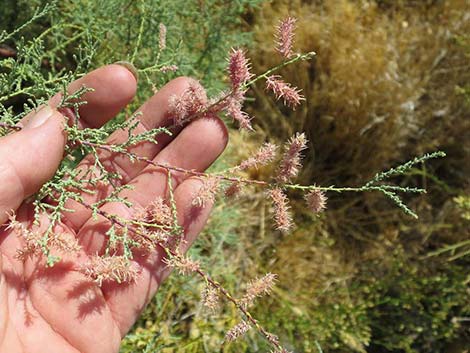 Leaves and flower spikes |
Seeds: Tiny, hairy-tufted, thousands per tree per year. Habitat: Washes, canyons, lake shores, riverbanks; saline soils and almost anywhere that water is available. Elevation: To about 3,000 feet. Distribution: Native to east Asia. Widely distributed in washes and wet communities in the Lower Sonoran (Creosote-Bursage Flats) and Upper Sonoran (Mojave Desert Scrub) life zones. Comments: Exotic species, noxious weed. Saltcedar (T. ramosissima), and another close relative from China, Chinese Tamarisk (T. chinensis) have both been introduced in the American Southwest. These two species hybridize here, and it is thought that all Saltcedar along the Lower Colorado River are now hybrids, or that at lease it requires dissection of the tiny flowers to determine the species. Many field botanists now identify Saltcedar only the genus. See details in the Jepson Manual. |
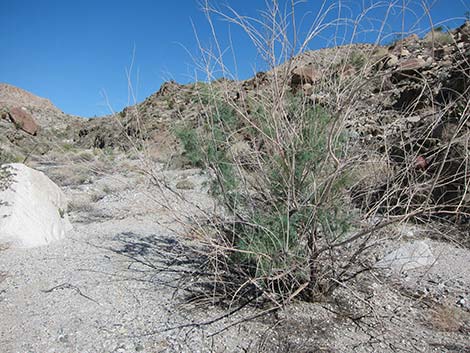 Saltcedar in a dry wash at Lake Mead NRA |
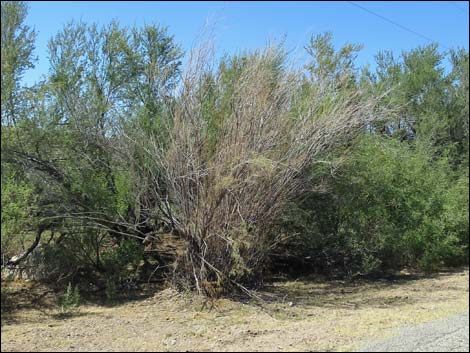 Saltcedar along Virgin River during summer being eaten by beetles |
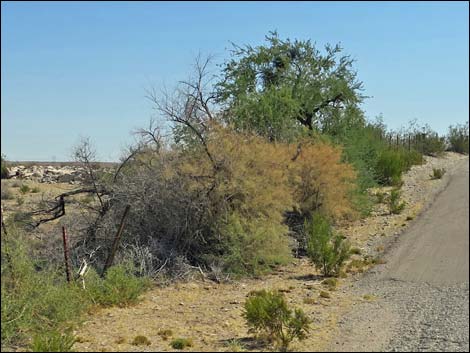 Saltcedar along Virgin River during summer being eaten by beetles |
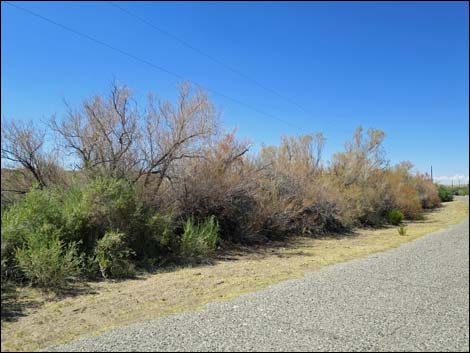 Saltcedar along Virgin River during summer being eaten by beetles |
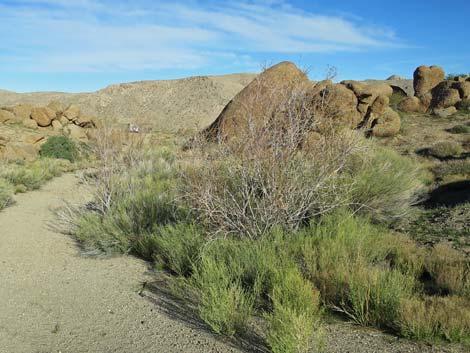 Saltcedar during winter at Granite Spring, Gold Butte Townsite |
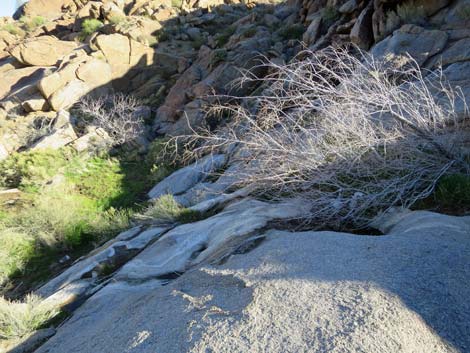 Saltcedar growing on granite during winter in Cedar Basin, Gold Butte |
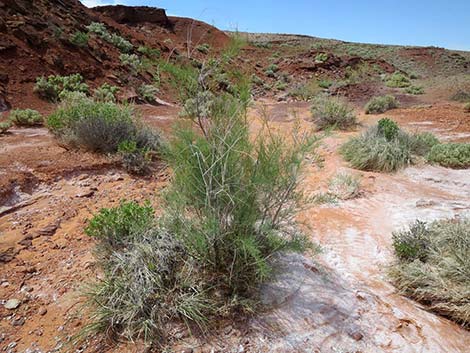 Saltcedar in a desert wash |
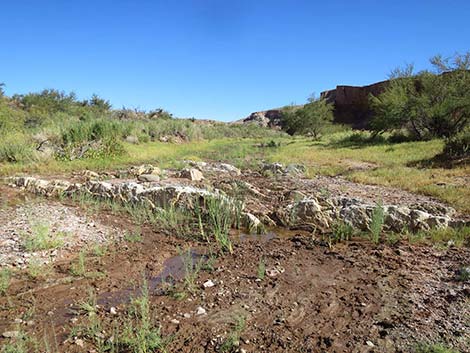 Hundreds of saltcedar sprouts in a desert riparian area |
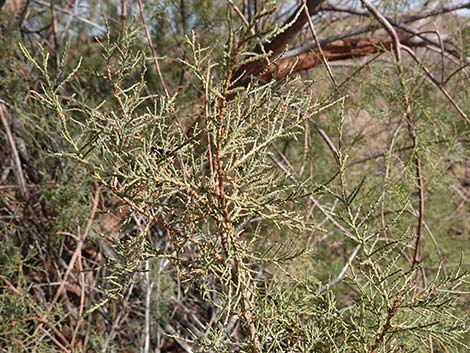 Terminal stems |
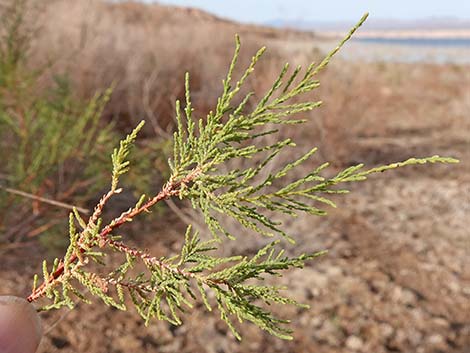 Terminal stems |
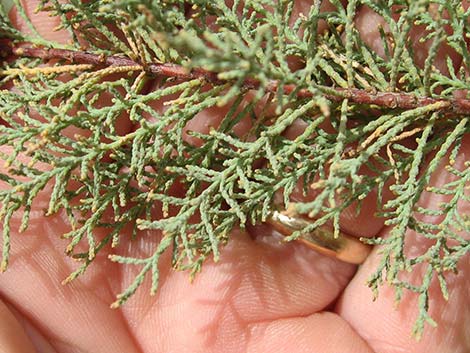 Red stems and scale-like leaves |
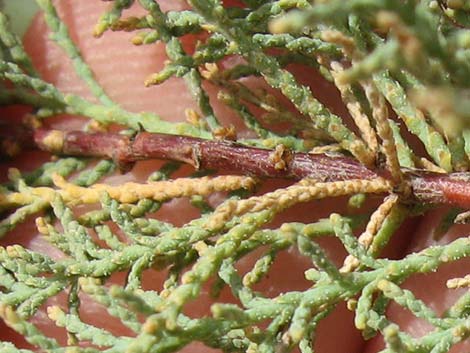 Red stems and scale-like leaves |
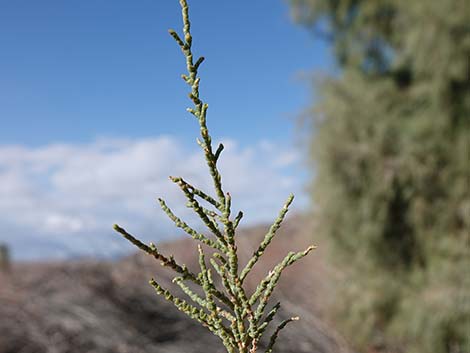 Scale-like leaves |
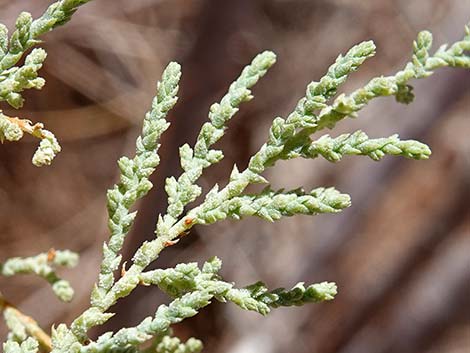 Scale-like leaves |
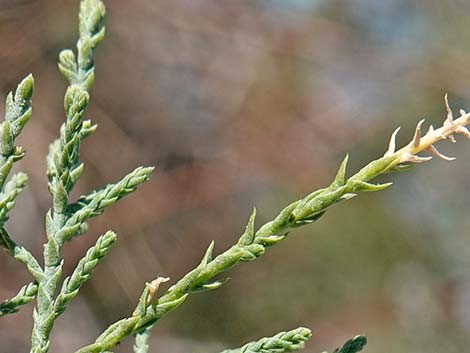 Scale-like leaves |
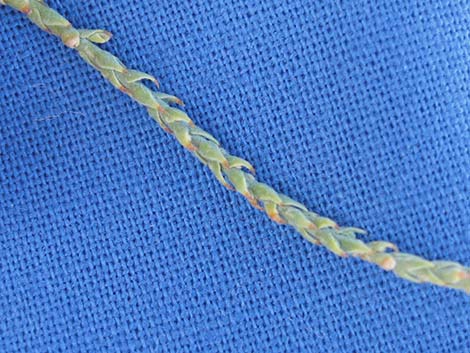 Scale-like leaves |
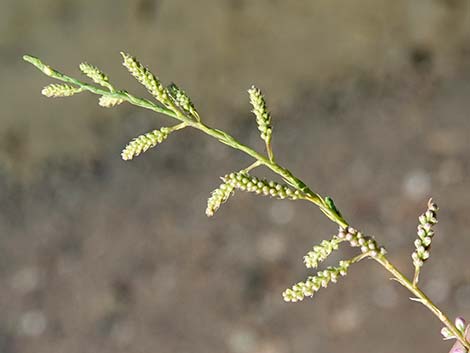 Flower buds forming |
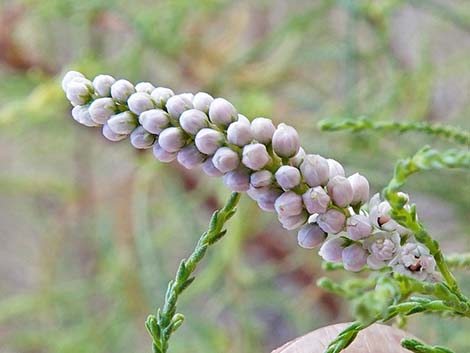 Flower buds ready to open |
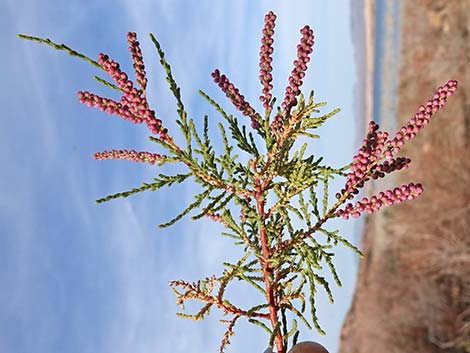 Flower buds ready to open |
 Leaves and flower spikes |
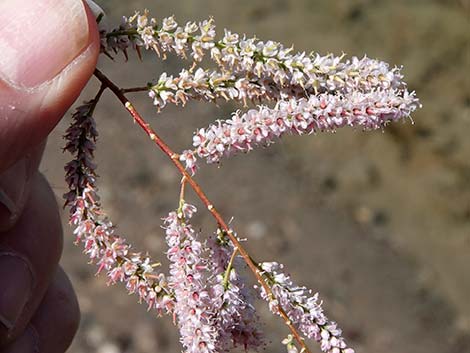 Flower spikes |
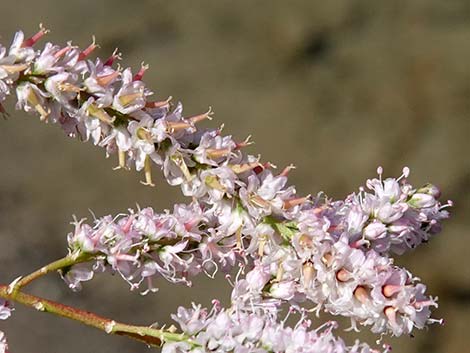 Flowers |
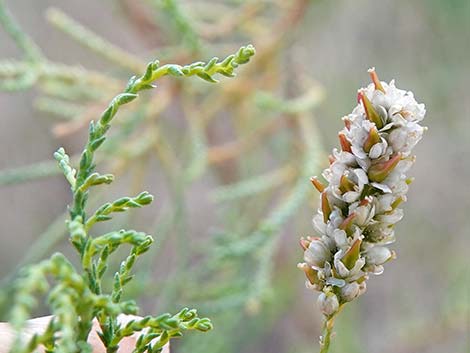 Flowers |
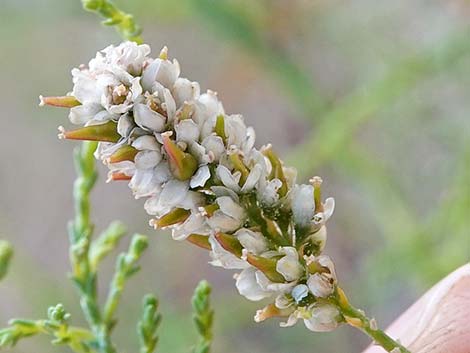 Flowers |
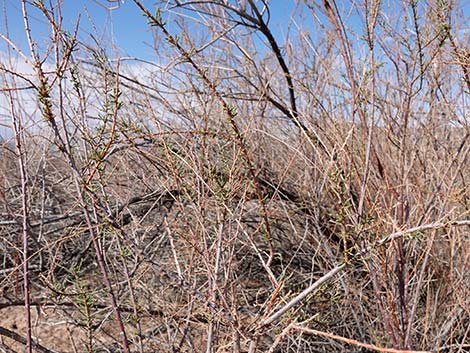 Saltcedar resprouting after a Saltcedar Leaf Beetle attack |
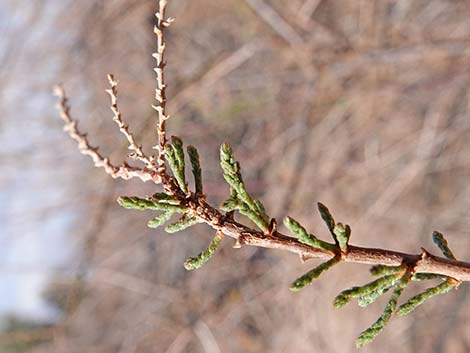 Saltcedar resprouting after a Saltcedar Leaf Beetle attack |
Note: All distances, elevations, and other facts are approximate. Names generally follow the USDA database.
![]() ; Last updated 231201
; Last updated 231201
| All Deciduous Trees | Plant Species Index | Glossary | Copyright, Conditions, Disclaimer | Home |